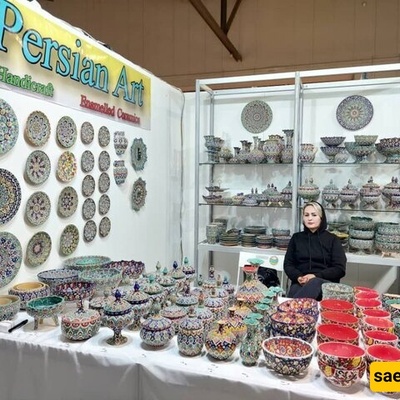Saednews: With the global registration of Yazd’s traditional goldsmithing art by UNESCO, this desert city is emerging as a unique destination for tourism, where gold, heritage, and desert landscapes offer visitors a unique experience.

The shimmering beauty of gold in Yazd is not just in the precious metal itself, but in the skillful hands that shape it into fine art. With deep historical roots, Yazd's goldsmithing has now earned international recognition, as UNESCO has inscribed the traditional goldsmithing of Yazd on its Representative List of the Intangible Cultural Heritage of Humanity.
Yazd's gold is more than an industry; it reflects a deeply rooted cultural identity, passed down from generation to generation in the city’s famed gold bazaar. This recognition adds a new chapter to Iran’s cultural pride and positions Yazd as a rising star in art tourism.
History of Yazd Gold
Gold jewelry and ornaments have long been crafted in various Iranian cities, but Yazd gold stands out for its unique design, brightness, alloy quality, and intricate workmanship. Archaeologists have traced the city’s goldmaking back to Parthian times, identifying Yazd as one of the oldest centers of gold art in Iran.
Over the past 2,000 years, Yazdi artisans have crafted gold for kings and nobles, cementing the city’s reputation in the national and regional jewelry trade.

Unique Features of Yazd Gold
High Purity: Most Yazd gold items are made with 20-karat purity, regarded as among the highest in the Iranian market.
Physical Qualities: These items are known for their softness, flexibility, resistance to corrosion and discoloration, and elegant shine.
Cultural Value: Every piece tells a story. Beyond mere adornment, Yazd gold reflects centuries of tradition and identity, now globally recognized as cultural heritage.
While gold in most parts of Iran is made with 18-karat purity, regions like Yazd, and parts of the south, prefer higher-karat gold (20–22), influenced by local tastes. In Yazd, shiny, artistically designed gold is highly popular, often crafted with traditional, handmade patterns by master goldsmiths.
This artistry has earned national cultural heritage status in Iran, and now, with UNESCO recognition, Yazd is poised to become a global symbol of artisanal elegance in the heart of the desert.

